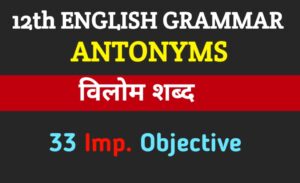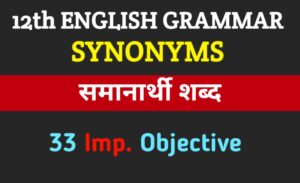
overview: here some most important questions for prose class 12 board 2026 . Top 10 most important questions form prose.
Q1. What do the inhabitants of Seemapuri do for their survival?
Ans. The residents of Seemapuri make a living by picking garbage. They are ragpickers who search through garbage to find and collect recyclable materials that they can sell. This menial and dangerous work is their main source of livelihood.
Q2. Who is Danny Casey? Who finds in him the icon as his or her hero worship?
Ans. Danny Casey is a legendary Irish footballer who is immensely popular. Sophie, a teenager, sees him as her idol. She even daydreams of meeting the footballer. She tells her brother that while she was looking at clothes in Royce’s window, someone came and stood near her. When Sophie looked around, she saw it was Danny Casey.
Jansie wants Sophie to grow wiser and stop dreaming. But Sophie considers Danny Casey the best player. She believes he’s with the best team in the country, and in the teenager’s eyes, he’s also quite young.
Q3. Why do the celebrities who have become the victim of interview, despise it?
Ans. Celebrities who have been subjected to interviews hate them because they violate privacy, distort facts, and exaggerate personal matters. They feel controlled by the media and often face misrepresentation or exploitation for entertainment and ratings.
Q4. Why did Gandhiji not like Charles Freer Andrews to stay in Champaran?
Ans. Gandhiji did not want Charles Freer Andrews to stay in Champaran because he believed that we must rely on ourselves to win the struggle and not seek help from the British. Furthermore, Andrews, being a prominent figure and renowned for his social work, could have attracted media and government attention, overshadowing the struggle of the local farmers. Gandhiji believed that the solution to the problems of the indigo farmers lay in grassroots organization led by the local people and did not want any outside influences to undermine their efforts.
Q5. What made the peddler finally change his ways?
Ans. The hawker eventually changed his ways because of the compassion and kindness shown by Edla Wilmanson. Despite knowing he was not the captain, Edla treated him with respect and hospitality during Christmas. Her unwavering kindness and faith deeply touched the hawker, making him realize the value of human decency and the possibility of resurrection. Because of this profound experience, along with Edla’s generosity and acceptance, the hawker decided to return the stolen money and leave a letter, a sign of his transformation and newfound honesty.
Q6. Who was the rattrap seller? How did he make rattraps?
Ans. The rattrap peddler was a wandering vagabond. The peddler would obtain wire rattrap materials from stores or large agricultural firms by begging. He would later make them in his spare time.
Q7. What was the second lesson of Douglas’s training?
Ans. The instructor held Douglas near the swimming pool and asked him to move his legs. At first, his legs were unable to function. But gradually they returned to normal, and Douglas could now swim with them.
Q8. Describe the hazards of working in the glass bangles industry.
Ans. Parents and their children work in glass furnaces, which are heated to extremely high temperatures, located in filthy rooms with no air or light. In dark barracks, boys, girls, their fathers, and their mothers sit before flickering oil flames. They melt colored glass to form round bangles. Workers often lose their eyesight before reaching adulthood.
Q9. What does garbage mean to the elderly people?
Ans. In the chapter “Lost Spring,” garbage symbolizes subsistence for the elderly. It is their means of subsistence, providing them with a livelihood. They see it as a way to earn a meager income to support themselves and their families, which is essential for their daily lives and survival.
Q10. What did M. Hamel write on the blackboard with a piece of chalk?
Ans. M. Hamel turned to the blackboard, took a piece of chalk, and with all his might, wrote in as large letters as he could—
“Long live France!”
Q11. Whom did M. Hamel blame for the ignorance in studies and why?
Ans. M. Hamel blamed parents, students, and himself for the lack of academics. He criticized parents for prioritizing work over education and sending their children to work in the fields or mills. He rebuked students for their lack of interest and tendency to avoid studies. He blamed himself because he often sent students to water his flowers and gave them leave when he wanted to go fishing.
Q12. What was the utility of garbage for the poor children in Seemapuri?
Ans.For children, garbage meant more than just survival. They found gold (coins) in it. For them, garbage was wrapped in wonder.

Most important questions for prose class 12
overview: here some most important questions for prose class 12 board 2026 . Top 10 most important questions form

🚀 Class 12 Physics Important Derivations Chapter-1 (Hindi Medium) – बोर्ड एग्जाम 2026 के लिए Sure Shot व्युत्पत्ति
Class 12 Physics Derivations Chapter 1 Hindi Board 2026 प्रश्न 1. विद्युत फ्लक्स को परिभाषित कीजिए। स्थिर वैदुतिकी मैं गैस

🔥 Class 12 Supplementary Reader – 100% Exam में आने वाले Most Important Questions (Hindi Medium)
Supplementary Reader Important Questions 12 up board Q1.Why could charley never find ‘The third level’ again? Ans. The third level

🔥 Class 12 Important Antonyms – 100% Exam में आने वाले विलोम शब्द (Hindi Medium)
Class 12 Important Antonyms Hindi Medium 1. The antonym of ‘honest’ is? (a) Passion (b) industrious (C) Dishonest (d) intelligent

🔥 Class 12 Important Synonyms – 100% Exam में आने वाले पर्यायवाची शब्द (Hindi Medium)
Class 12 Important Synonyms Hindi Medium 1. The synonym of ‘diligent’ is? (a) Passion

MCQ Class 10 Science Chapter 3 – 100% यही से आयेंगे Objective Questions (Hindi Medium)
Class 10 Science Chapter 3 MCQ Hindi Medium Board 2026 प्रश्न 1. चांदी के ऊपर काली परत चढ़ जाती है
